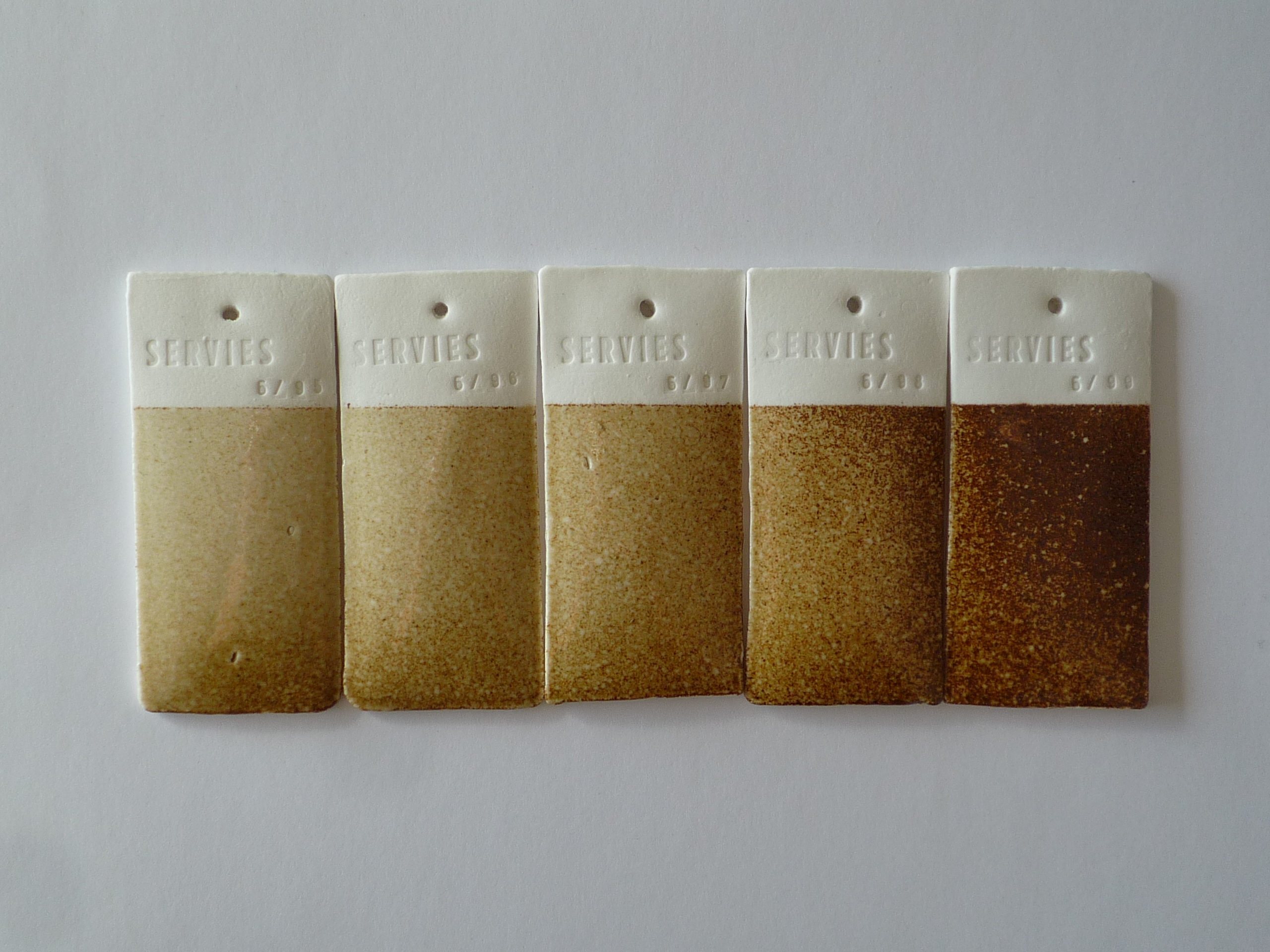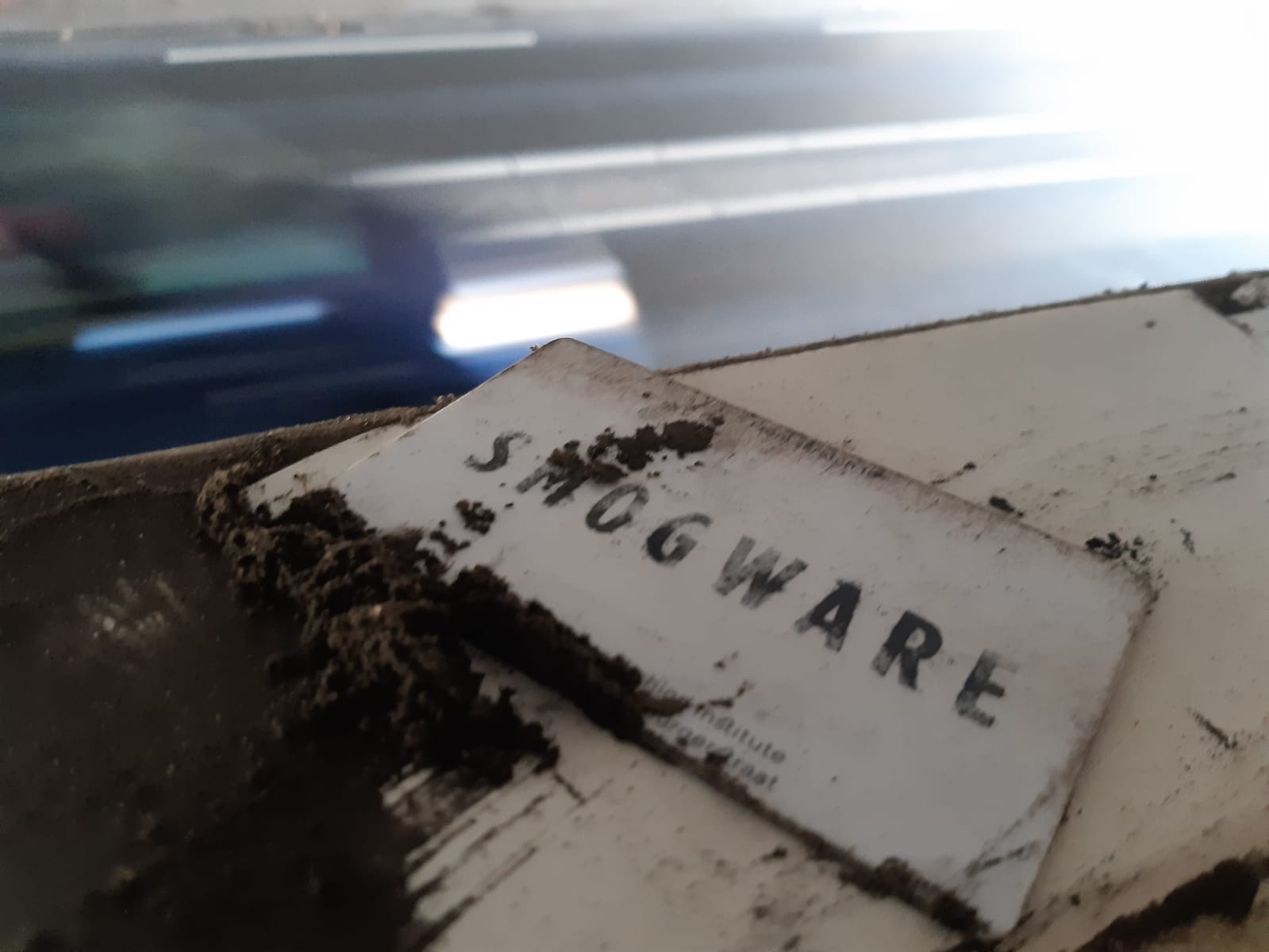
What are we talking about?
Despite improvements in the air quality in the last decades, air pollution still creates damage to nature and our health. The RIVM (Dutch National Health Institute) estimates that yearly a few thousand people premature die as a consequence of air pollution, on an average 12 months , in Rotterdam 1,5 year.
The air quality is determent by various pollutants in the air, like nitrogen dioxide sulphur dioxide, soot or fine dust. All these elements have a different effect on our health. All airborne particles under 10 micrometer (µm), or smaller then 0,01mm are defined as fine dust. These particles ‘Particulate Matter’ are categorised in three sizes. Smaller then 10µm is PM10, PM2,5 (diameter smaller then 2,5µm) and PM1 (ultra fine dust, even smaller then 1µm). The smaller the particle, the further it penetrates into the body, the more harm it can do to our health.
These particles are created for about 80% by human activities. The other 20% lies in natural sources like sans, salt in the air (specially at sea side). The focus of the project is the air pollution caused by traffic, the dust particles from brakes, tires, and the exhaust. Because these particles are firstly created by ourselves, and then breath by us all.
How to get dust on your plate?
Different techniques of harvesting the settled pollution, wet and dry. When only a thin layer of pollution is settled the material is collected with a soapy water. After sinking and drying it is used as a powder. However bigger amounts can be collected with the dry technique. A special design harvest tool, a biodegradable card, helps in scraping the pollution of the surface. Locations for harvesting are along roads in the city with intense traffic, to collect exhaust and non-exhaust (like break wear) related particles. Best are places covered for rain and wind, where settled dust can remain for decades.
The powder is used for the glaze, only a transparent glaze is used as a medium, there are no additives, colours used. The different materials in the fine dust, like sand, iron particles determine the colour. These materials are commonly used by ceramist, however never in this curious melange.
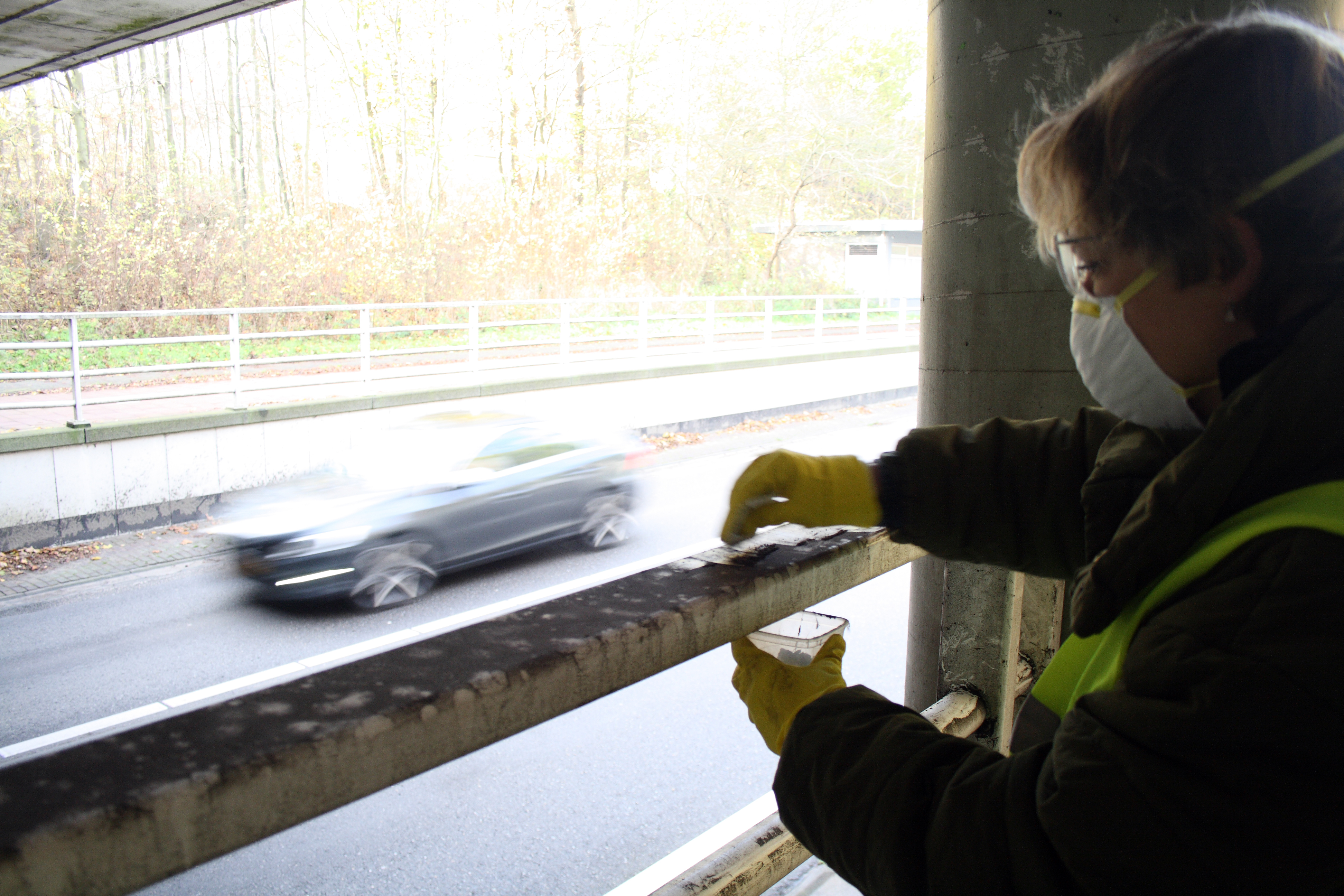
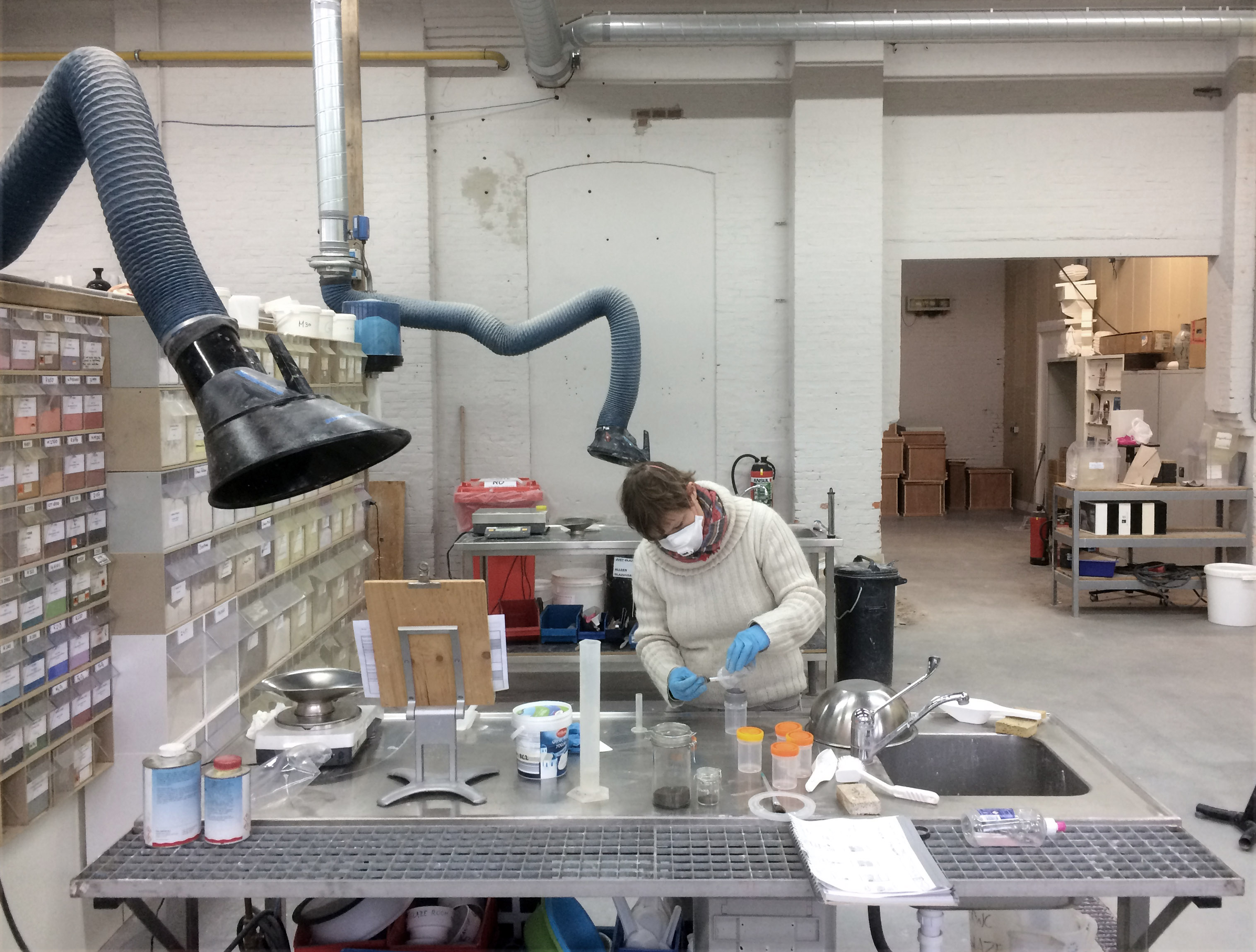
Is it safe?
As the typical Delfts Blue is created with the toxic cobalt oxide, it is safe to use after it is fired at high temperatures. The Smogware glaze has been tested by TNO and TCKI and the air pollution is safe for use when it is a glaze on the tableware.
samples before the fire
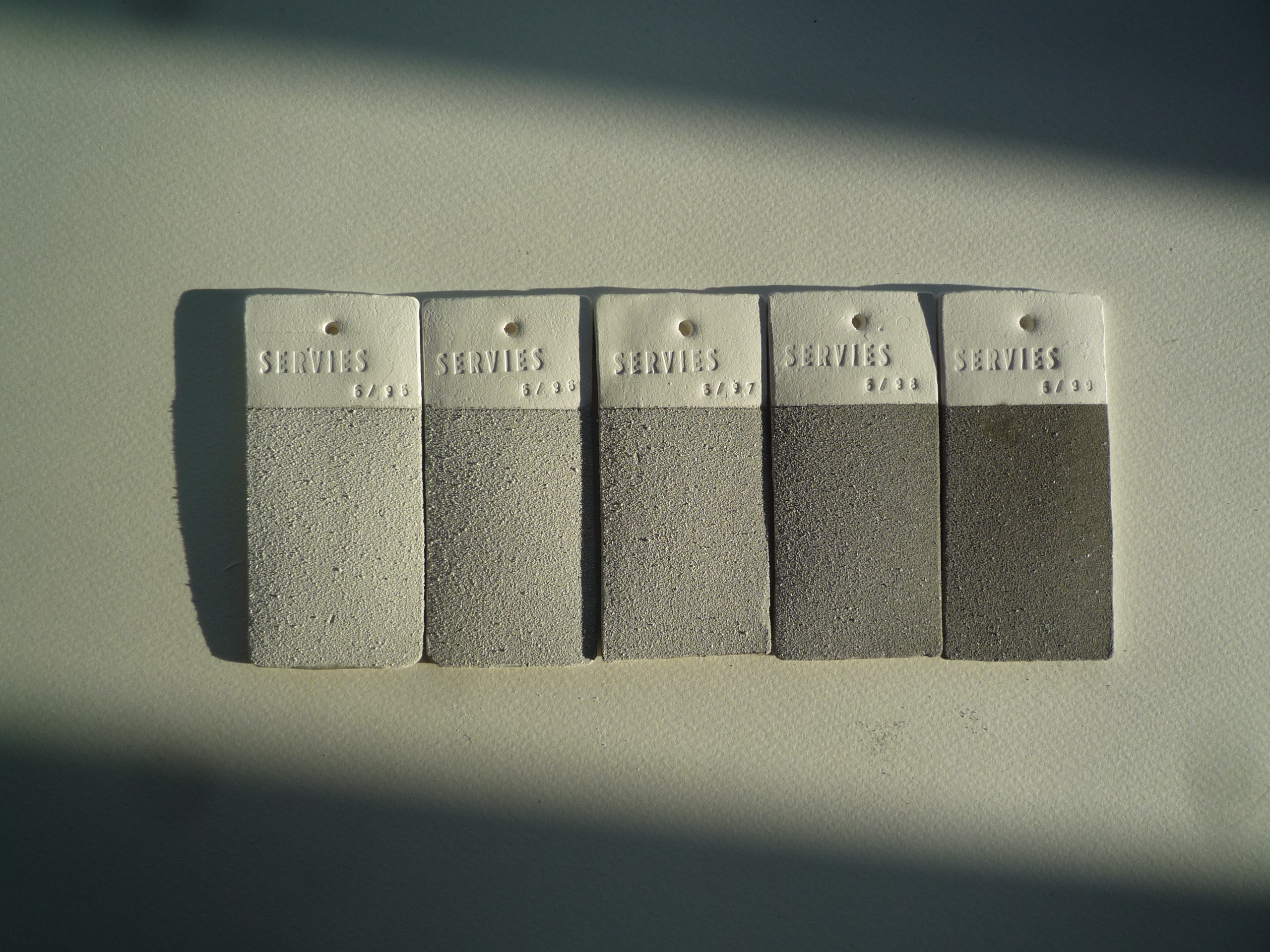
samples after the fire
